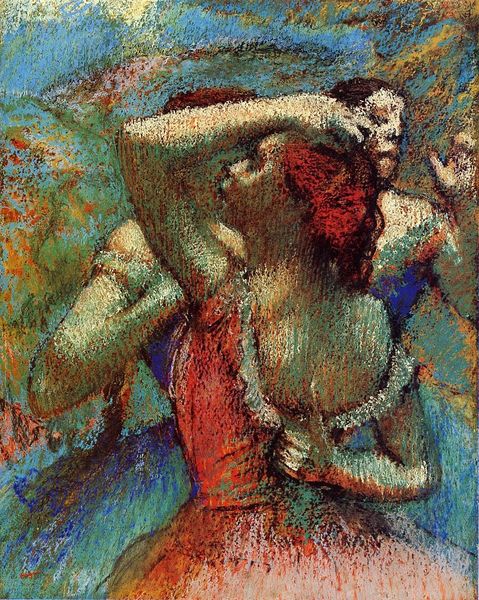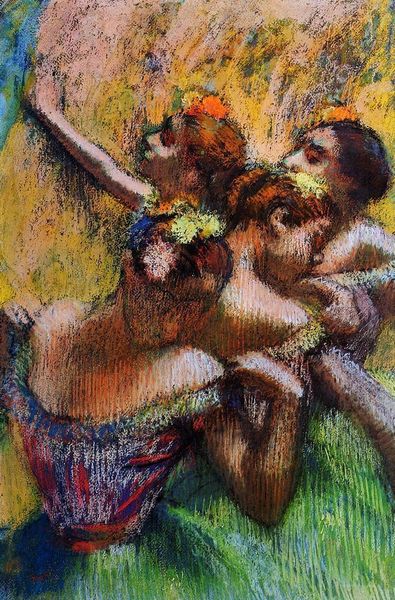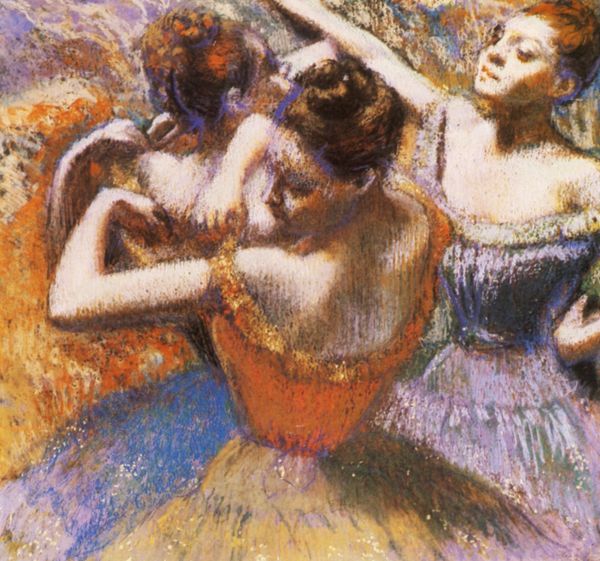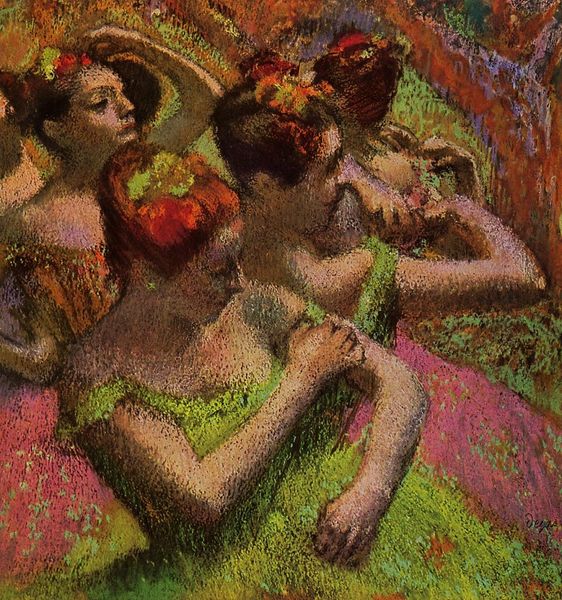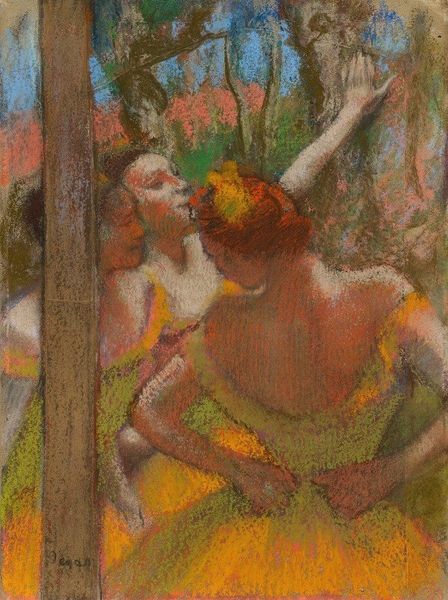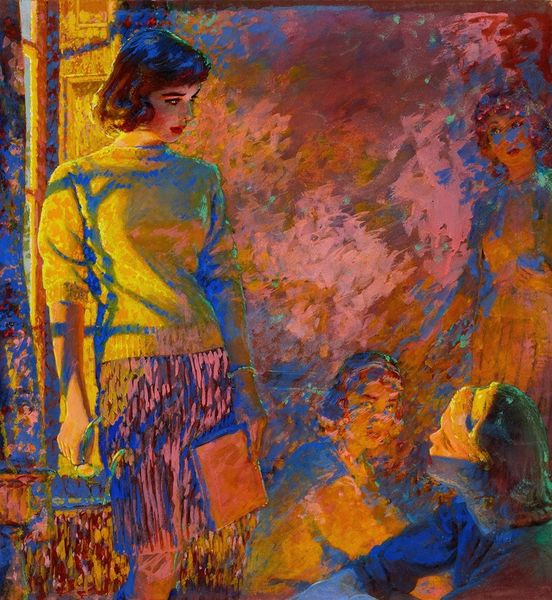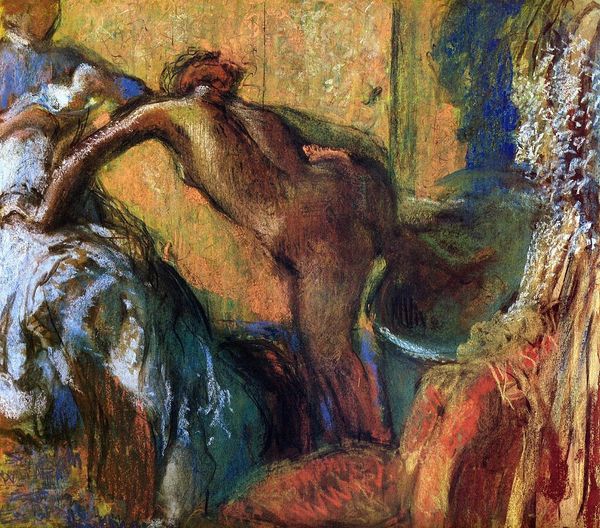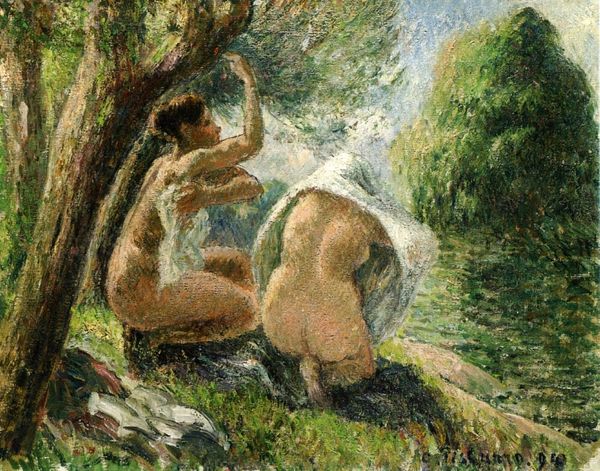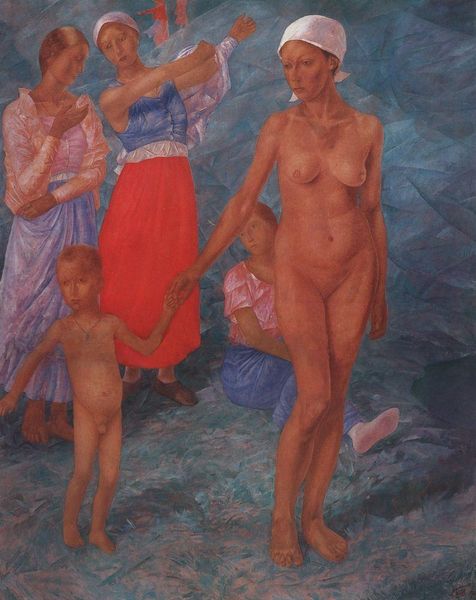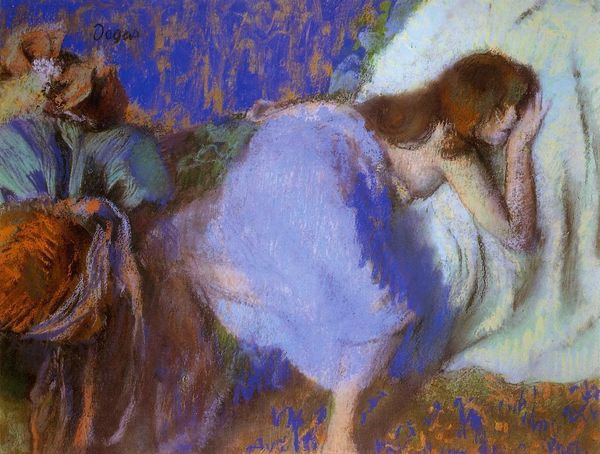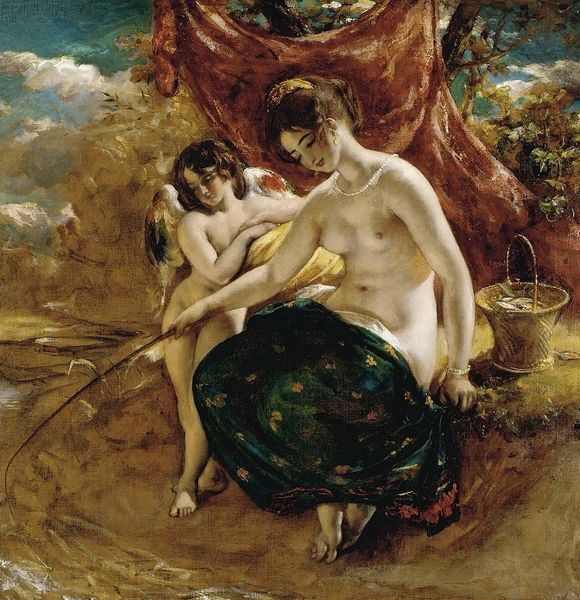
Copyright: Public domain
Editor: So, here we have Degas’s “Blue Dancers” from 1899. The pastel on paper has this incredible dreamy quality with its blue and green hues, but there's also a kind of melancholic feel to the ballerinas in their dressing room. What do you see in this piece beyond the obvious subject matter? Curator: Oh, beyond the surface sparkle? It’s funny, Edgar never romanticized dancers, did he? More like a fly on the wall, watching these young women preparing— exhausted, perhaps a little bored, certainly not the glittering fantasy one might expect. Degas preferred this quiet backstage moment. It is almost an elegy of sorts. Does it make you wonder about their interior lives? Editor: It does, actually. Their postures suggest a world beyond the performance, almost like the artist wanted to portray not their perfection but their everyday fatigue and introspection. Curator: Exactly. Look at how the pastel strokes create movement and form. These weren't posed portraits, right? More like glimpses. He wasn't selling perfection but documenting real moments, that quiet pause before the show...the calm before the storm. Editor: So it's almost like we are seeing their world backstage with a very modern and intimate viewpoint? Curator: Absolutely. We are voyeurs but it feels deeply human and authentic. We may think that art is about the big show but what is compelling about “Blue Dancers” is that it reminds us that the ordinary can also be quite extraordinary. Editor: That definitely changes my perspective. It's not just a pretty picture of ballerinas, it’s a peek into the everyday grind and hidden vulnerability of the performers. Curator: Right? Art sneaks up on you sometimes, doesn’t it? A new little discovery.
Comments
No comments
Be the first to comment and join the conversation on the ultimate creative platform.
